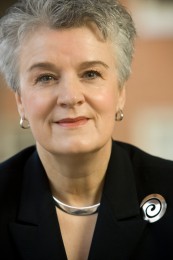Making the China connection
The Institute of International Education reports a record high number of international students in the United States for 2009-2010, and Chinese student enrollment has been the primary driver — increasing by 30 percent this year.
Colleges and universities nationwide are selectively recruiting students to their campuses and encouraging highly-qualified Chinese candidates to apply for admission. Some institutions, such as Wake Forest, are forming partnerships with each other and with Chinese organizations to help open doors between the two countries.
Linda McKinnish Bridges, who is leading Wake Forest’s initiative in China, says colleges and universities — public and private, large and small — are recognizing changes in the global economic structure. “The U.S. and China are going to be related economically, politically and culturally” she says. “It’s the new global community of the future, and it’s imperative for students to be connected.”
In part, the increase in Chinese students relates to the Chinese government’s 10-year educational reform plan designed to make their students more competitive in the global market. Education has traditionally been an important part of Chinese culture and McKinnish Bridges says families are eager to do what is necessary to ensure their children receive a good education. “Today, the U.S. has some of the best colleges and universities in the world,” she says. “In the Chinese culture, education matters. Whatever sacrifices are necessary to secure an excellent education, the family will make them.”
The opportunity for individual choice also brings Chinese students to America. In China, students take tests near the end of their high school studies. The score determines what college they will attend and what career they will have, McKinnish Bridges says. Students from China are eager to come to the U.S. to choose their own college and career path. “The students are very practical. They often plan to earn degrees in business, science or math but many also want to learn about literature, arts and culture. In our American curriculum, especially in the liberal arts community like Wake Forest, science and art, business and literature, and finance and drama exist side by side,” she adds.
McKinnish Bridges will travel to several Chinese high schools in December along with representatives from eight other universities — all are partners in China America University-School Alliance (CNA-USA), one of the organizations working to help pair Chinese students with American universities. The visit will also include discussions at the University for International Relations in Beijing regarding exchanges of ideas, faculty and resources. McKinnish Bridges says her Mandarin language skills have helped build a sense of trust and partnership during these visits and give Wake Forest a distinct advantage.
Chinese students coming to the U.S. and American students heading to China will foster better cultural understanding as a result of having shared each other’s experiences. She says Wake Forest, and other institutions with strong identities, are well positioned for this kind of outreach.
“At Wake Forest, we have a firm sense of our cultural identity. While continuing to hold on to our heritage, we have already reached beyond our southern roots to become a national university. Developing relations with China stretches us to reach further, and in the process, we are becoming an international university. Many colleges are trying to build this experience because it is tremendously advantageous to students to experience multiple world views. The greater variety of life experiences to share, the more tolerant we are of each other and the more prepared we are to work together in the future.”
Categories: Enrollment & Financial Aid, Global Wake Forest, University Announcements
Media Contact
Wake Forest News
media@wfu.edu
336.758.5237




